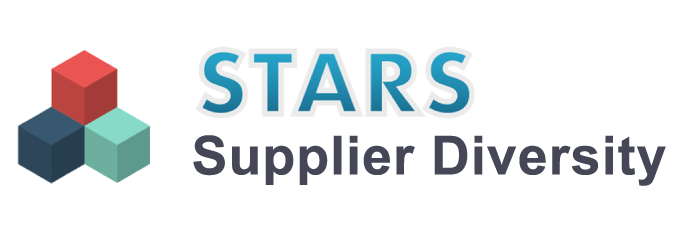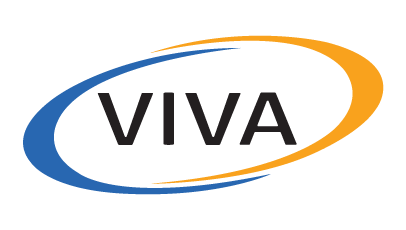10 Best Practices for Implementing a Supplier Diversity Program – Phase II

Introduction to Supplier Diversity Programs
Supplier Diversity Programs have become essential strategies for businesses aiming to foster innovation, support economic growth, and promote inclusivity. By engaging suppliers from various underrepresented backgrounds, these programs diversify and strengthen supply chains, enabling businesses to thrive in an increasingly dynamic global market.
According to the Business Supplier Diversity Council, companies that prioritize supplier diversity see a 133% greater ROI compared to those that don’t. For every dollar spent on these programs, businesses report generating $25 in return—a testament to the profound impact of supplier diversity.
Brief Recap of Phase I
Phase I focused on laying the foundation for supplier diversity. Key elements included:
- Leadership Commitment: Securing executive support to allocate resources and drive momentum.
- Senior Manager Appointment: Designating a leader to oversee implementation and alignment with corporate goals.
- Policy Development: Establishing clear guidelines for identifying and engaging diverse suppliers.
- Baseline Spend Analysis: Measuring current engagement to set realistic targets.
- Technical Integration: Implementing technology to streamline processes and gather actionable insights.
- Onboarding and Education: Familiarizing stakeholders with program objectives and expectations.
Phase II builds upon this groundwork, moving toward refinement and enhancement of the program’s effectiveness.
The Transformative Impact of Supplier Diversity
Supplier diversity enhances a company’s competitiveness and resilience while fostering economic and social progress. Companies like Johnson & Johnson and IBM have demonstrated how diverse supplier bases can:
- Fuel Innovation: Unique supplier perspectives lead to fresh ideas and novel solutions.
- Expand Market Reach: Diverse suppliers help businesses tap into niche and underserved demographics.
- Strengthen Supply Chain Resilience: A diversified supply base mitigates risks and ensures continuity during disruptions.
10 Best Practices for Implementing a Supplier Diversity Program – Phase II
- Comprehensive Training Invest in continuous training to equip stakeholders with the latest tools and knowledge. Regular workshops on diversity trends, policy updates, and technology adoption ensure alignment and capability enhancement.
Example: IBM’s workshops empower teams to manage and maximize supplier relationships effectively. - Strengthen Supplier Relationships Deepen engagement with diverse suppliers through collaborative initiatives, regular feedback, and shared growth strategies. Strong relationships foster mutual trust and long-term value creation.
Example: Cisco’s supplier collaboration events promote shared learning and innovation. - Utilize Advanced Technology Integrate cutting-edge tools like AI-powered analytics and blockchain for enhanced monitoring, tracking, and reporting. These technologies simplify compliance and improve program transparency.
Example: Walmart’s Supplier Management System offers real-time performance insights. - Encourage Continuous Feedback Establish feedback channels for suppliers to share their experiences, challenges, and recommendations. Insights from feedback drive program adaptability and improvement.
Example: Procter & Gamble’s feedback forums ensure the program remains responsive and inclusive. - Foster Collaboration Among Suppliers Create platforms for suppliers to exchange ideas, best practices, and resources. Collaborative environments encourage innovation and strengthen the supplier community.
Example: Toyota’s industry-focused supplier groups foster dialogue and shared problem-solving. - Regularly Update Policies Review and adapt supplier diversity policies to reflect changing business dynamics, regulatory requirements, and market trends. Keeping policies current ensures the program’s relevance and effectiveness.
Example: Microsoft’s periodic policy reviews ensure alignment with global diversity standards. - Promote Internal Awareness Celebrate program successes internally through newsletters, events, or town halls. Highlighting achievements builds organizational support and reinforces the program’s importance.
Example: General Electric’s internal communications showcase program milestones, fostering pride and engagement. - Commit to Continuous Improvement Adopt a mindset of iterative enhancement. Regular evaluations and updates prevent stagnation and ensure sustained impact.
Example: Coca-Cola’s annual assessments identify improvement areas and drive strategic updates. - Align with Global Standards Global alignment ensures consistency and credibility, especially for multinational companies. Adhering to international diversity benchmarks opens opportunities in diverse markets.
Example: Intel’s global diversity standards ensure uniformity across its operations. - Celebrate Supplier Successes Recognize and reward top-performing diverse suppliers. Celebrating their achievements not only motivates suppliers but also underscores the company’s commitment to diversity.
Example: Amazon’s Supplier Diversity Awards acknowledge exceptional contributions, fostering motivation and loyalty.
The Role of STARS in Phase II Implementation
STARS provides tailored solutions to streamline and enhance supplier diversity programs:
- Data Scrubbing & Enrichment: Ensure data accuracy for informed decision-making.
- Tier 2 Spend Reporting: Gain visibility into indirect supplier diversity efforts.
- Supplier Sourcing Locator: Access a comprehensive database of diverse suppliers.
- Economic Impact Analysis: Quantify the community impact of your diversity investments.
By leveraging STARS’ advanced tools, businesses can efficiently navigate Phase II and achieve measurable outcomes.
Conclusion
Phase II of a Supplier Diversity Program is about refining, enhancing, and sustaining the initiatives laid out in Phase I. By embracing continuous improvement, leveraging technology, and fostering collaboration, businesses can unlock unparalleled value.
With the right strategies and tools, such as those provided by STARS, companies can transform supplier diversity into a cornerstone of their success—benefiting not just their bottom line but also the communities they engage with.

